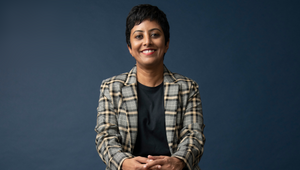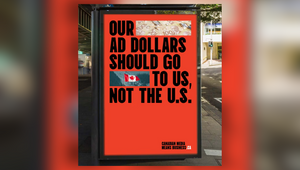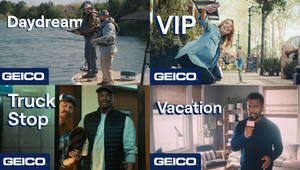
The Magic Behind Skyscanner’s Approach to Marketing

Flying will always be something magical.
When boarding the plane, the excitement of the destination on the other side starts to settle in. Out the window you see cities lit up like the night sky, clouds so inviting you want nothing more than to reach out and see for yourself how soft they are.
It is a privilege to be up exploring the same skies that are home to birthday wishes, prayers on sleepless nights, drunken laughter and rambling to no one in particular and curses to whomever is believed to be up there.
Before all this magic can begin, there are essentials that need to be taken care of. Getting a passport, for example, or checking your luggage or booking a hotel. The admin of a holiday can be overwhelming. This is something that Skyscanner knows very well. It is the thing they want to make easy for their customers - and so they do.
Skyscanner's Andre Le Masurier spoke to LBB’s Casey Martin on the effectiveness of the brand’s marketing and how they are bringing consumers from Australia and Canada to their desired destinations.
LBB> Andre, how do you align marketing goals with the company's business objectives?
Andre> Our marketing goals closely align with our business objectives, which comes from having a clear vision, mission and strategy for where we are going as a brand including key KPIs we need to hit quarter by quarter. Our marcoms approach differs from market to market based on brand development but broadly we are looking for significant uplift in Awareness, Consideration and Brand Affinity in developing markets.
In more developed markets we aim to increase unique visitors to the product with healthy retention metrics. In Australia where we are higher up on the brand development ladder, there is more of a focus on mid-lower funnel traffic drivers and bookings versus in Canada we focused on more pure play brand building. All of this works in lock step with the paid performance channels, marcoms and content marketing team.
We have a strong media agency partner in Rebel & Thorn who work closely with our internal data science team, so our brand investment aligns with business objectives which we track week to week and analyse regularly. Success means hitting our ambitious goals, but almost as importantly, continued optimisation and the creation/refinement of a brand playbook to help us grow the audience and reach our geo growth goals into 2024 and beyond.
LBB> How do you measure the effectiveness of your marketing campaigns?
Andre> We work closely with our media agency Rebel & Thorn and our internal data science teams to measure the success of our campaign along with close working relationships across platforms like YouTube, Instagram and FB. We test creative along the way looking at leading indicators as well as regular brand lift studies before, during and after the campaign cycle. We create as many feedback loops as possible to track the efficacy of the spend to ensure we are on track.
LBB> How does marketing and advertising at Skyscanner maintain growth?
Andre> First and foremost, it requires ownable, interesting and distinctive ideas and crafted executions so we give ourselves the best chance to stand out in a very competitive market.
We need to be bold and interesting but also ensure we truly understand travellers' needs and not talk at them but with them in unique and novel ways. Creative disruption is key, but it also must be measurable and efficient.
As mentioned above we ensure that our marketing campaigns are rigorously tested and tracked, so we can continue to optimise and ensure strong ROI and make the necessary pivots along the way.
Our brand building efforts attract new customers giving our performance channels a better chance at converting the awareness and consideration we generate. Brand investment helps us avoid hitting a performance plateau, but all the channels must work in lock step, which isn’t always easy but we’re getting better at it. We regularly communicate progress and learnings to our internal stakeholders and ideally put more resources into the strategies and tactics that are working and pivot away from those that aren’t paying dividends.
Being able to make quick edits to creative with our in-house team and optimisations on the media approach based on consumer engagement and leading indicators allows us to maintain relevancy and growth in the advertising space. It's still early days and there’s always lots to learn. Monitoring leading indicators like Google share of search, VTR and CPM help us understand how we are tracking over shorter time horizons and gives us a sense of how we are progressing and any changes we need to make along the way.
LBB> How did you manage the balance between traditional and digital marketing strategies for Skyscanner?
Andre> This is our first multi-market, fully integrated campaign, so we wanted to test top of funnel channels like TV, OOH and see how they complement a digital strategy that worked well in the last campaign which was purely digital. The work aims to create something differentiated that defies category norms with more of a quirky, playful approach rooted in humorous insights and relatable pain points travellers face today.
We used our learnings from the previous digital only campaign that ran on Instagram, YouTube and Facebook and applied them to our strategies for both digital and traditional, solidifying our unique selling points while developing a cohesive campaign that works across channels. We aim to ensure that the entire campaign is as measurable as possible end to end allowing for tracking from off platform channels to our homepage where travellers perform a search or learn more about the campaign. Those learnings have allowed us to scale up our efforts significantly and take big bets on TV and OOH alongside the existing digital work. There's a massive scale you get from TV and OOH in Canada and Australia, plus the creative opportunities are quite exciting with some of the placements and partnerships.
LBB> How do you handle marketing during times of crisis or rapid change?
Andre> It’s no secret the travel industry is only just beginning to return to a sense of normal after the pandemic, a time when we had to really move quickly and adjust our marketing strategy in a way that none of us had done before.
The key is deeply understanding our audience, taking note of how they’re feeling, what they’re doing, what’s happening in culture and of course industry trends. That’s a lot easier for us as a company of travellers ourselves with a real traveller-first mentality that goes beyond values written on the wall. We have a very keen sense of the major pain points we all face today and how we are uniquely positioned to help travellers not only find the best price possible but live up to the lofty claim as The Ultimate Travel Hack. To do this we are constantly looking for new and unexpected ways to add real value and keeping our finger on the pulse of culture.
We need radical acts of creativity that stand out in a very crowded market that ideally help solve real traveller pain points that are ever changing. Having an internal creative studio that sits alongside like-minded creative partners like Little Big Engine, our internal data science team and our media partner
Rebel & Thorn makes this possible. Real time insights and understanding is critical but without world-class, passionate creative teams coming up with and executing big ideas it doesn’t work. There’s always room for improvement but where we are headed is super exciting.
LBB> Can you share an example of a challenge you faced and how you overcame it?
Andre> We noticed early in the first round of creative testing that audiences loved and remembered the characters and USP’s but we were losing brand attribution and recall. So, we started to play around with new ways to add branding early and often across the work, especially the films, in a way that felt natural. In one of the latest films featuring the Analog Travel Agent our characters mention Skyscanner 5x in a :30 spot but it plays off the scene and humour in a way that doesn’t feel forced (I’m biased of course).
That’s something we are doing across all the work, and it becomes a fun brief for the creative teams on how to do this in a way that’s organic and unexpected. If you look at the classic Old Spice work, they did a brilliant job to the point where you don’t even notice it and if you do it puts a smile on your face. Some of the TikTok character films and easter eggs we created do this well but it’s a journey of improvement and learning.
LBB> With in-house marketing on the rise, how do you feel about this trend and what future do you see for it?
Andre> This latest campaign was a big step creatively for our in-house creative team working even more collaboratively with Little Big Engine which was an absolute blast. I’m really proud of the steps we are taking internally but we couldn’t have gotten here without the brilliance from Patrick, Brandt and the Little Big Engine agency crew. Their creative, character-building and directorial chops are unmatched.
We work so well together from ideation to final execution it’s been a ton of fun.
Overall, I think the industry trend will probably continue. It can be quite challenging being agency side these days, but it totally depends on what type of shop you’re at. I saw a post from Mark Pollard titled “Is anyone enjoying working in advertising anymore?” and the answers were all over the map.
Then you look at the work being done by Uncommon and assume while challenging that it's gotta be mega to create work like that regularly. I think there’s a fallacy that you can’t be creative client side and do truly disruptive work. That you’ll drown in bureaucracy and or get put out to pasture but the reality (that I’ve found at Skyscanner and my time at Google) is that there’s loads of opportunity to do great work and sit much closer to the centre of truth and influence. It’s up to us, which is amazing.
The ability to work with like-minded, passionate travellers and create global campaigns, influence product positioning, features and design while building a billion-dollar brand... What’s not to like?















